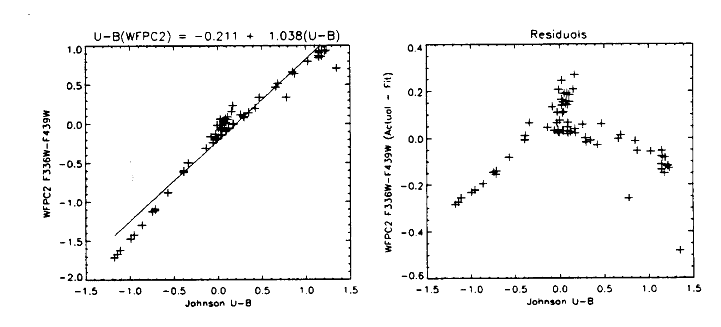



The WFPC2 UBVRI system is fairly close as regards effective wavelengths to the Johnson UBVRI system, but cross-calibration is necessary to convert to Johnson magnitudes. See the IDT OV/SV Report and Harris, et al., A.J. 101, 677 (1991) for examples in the case of WF/PC-1. Figure 8.1 through Figure 8.5 show the results of regression fits between these two systems on the main sequence stars in the Bruzual, Persson, Gunn, Stryker atlas that is installed in the calibration database system (CDBS). This atlas, and others, are available via the WWW from the WFPC2 Documentation page, or directly via
http://www.stsci.edu/instruments/observatory/cdbs/
astronomical_catalogs.html
Figure 8.1: F336W-F439W against Johnson U-B for the BPGS atlas of MS dwarf spectra. The change in slope in the transformation for U-B greater than about 0.1 is due to red leak in the F336W filter. For hotter stars, the transformation is quite linear. 
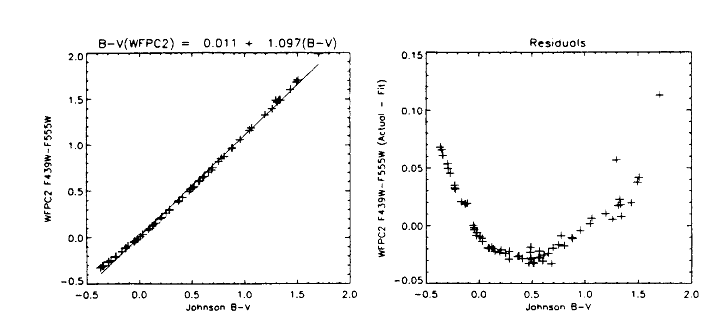
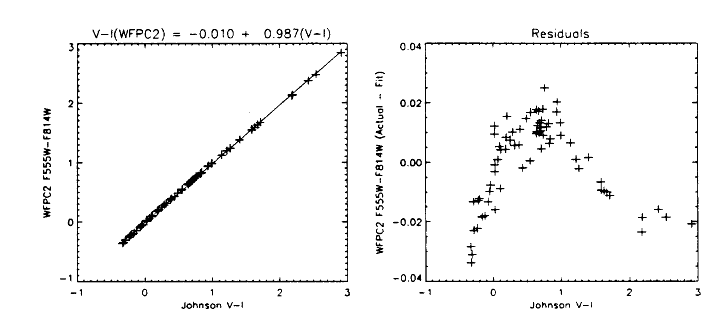
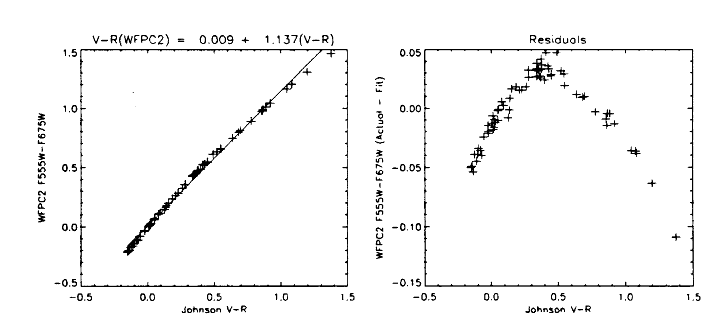
These fits should be used with caution for quantitative work. The zero-points in all cases are defined so that Vega's spectrum integrated over the bandpass is exactly magnitude zero (VEGAMAG in XCAL). The zero-points of the canonical Johnson-Cousins system differ from this by up to 0.02 magnitudes. The zero-points thus defined for the HST filters do not coincide with the STMAG definition used in the previous section. In addition, the ground based filter curves used, which are taken from Bessel (P.A.S.P. 102, 1181), give a good approximation to the standard Johnson-Cousins system, but are not as accurate as taking Landolt's curves and applying his color corrections to transform to the standard system. The latter procedure was used to derive the transformations given in Holtzman et al. (P.A.S.P., 1995b), which also discusses the changes in the transformations that result from source spectrum variations (such as metallicity and gravity effects).
Figure 8.5: F675W-F814W against Cousins RC-IC. The residuals from the best linear fit are similar to those that apply if F791W is chosen for a WFPC2 I passband. For spectral type M8V and later (not shown) the transformation will not work as well.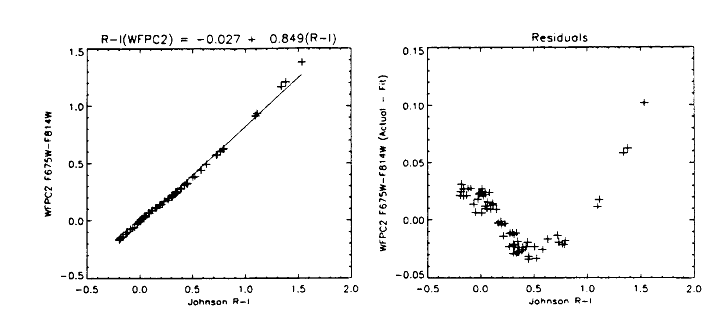


|
Space Telescope Science Institute http://www.stsci.edu Voice: (410) 338-1082 help@stsci.edu |